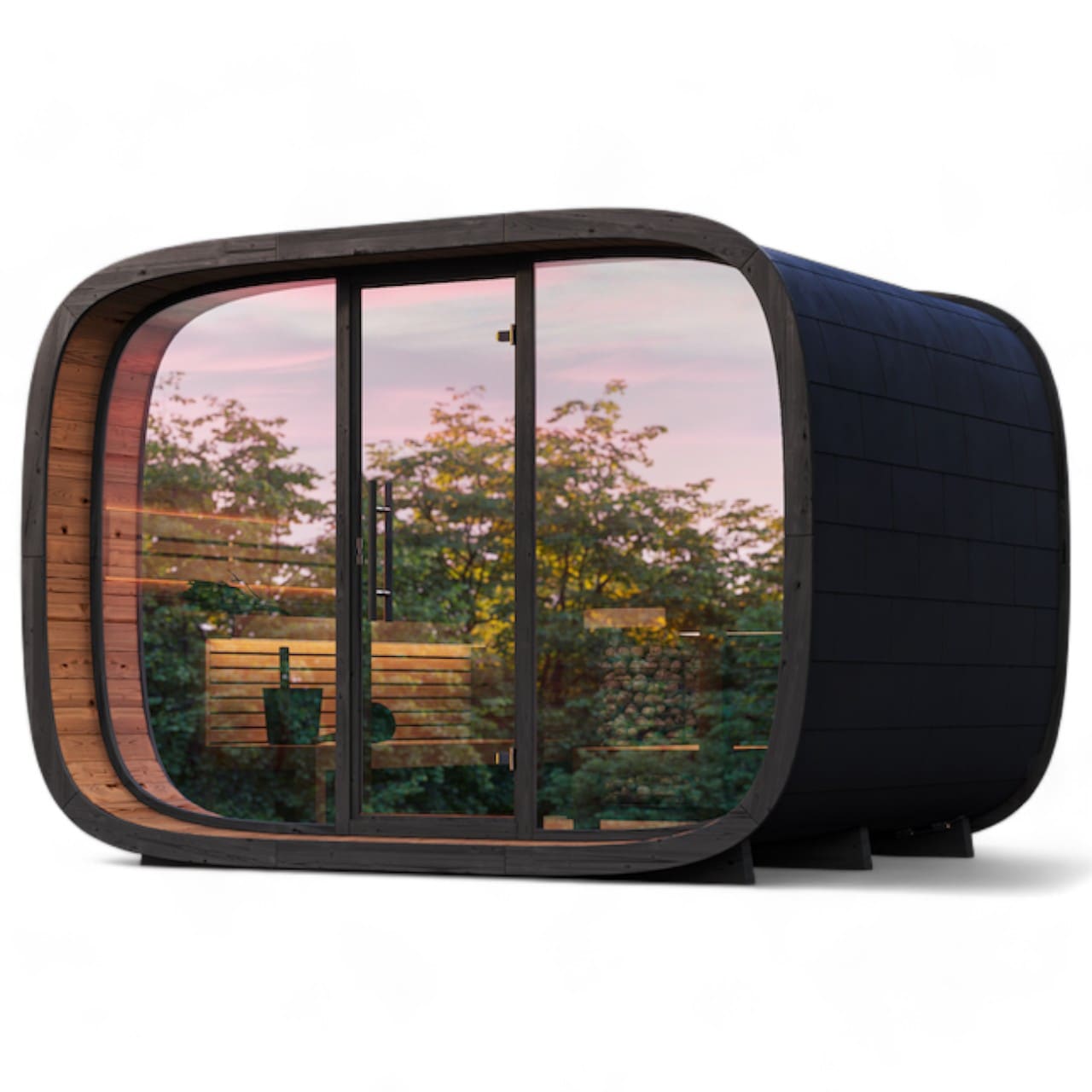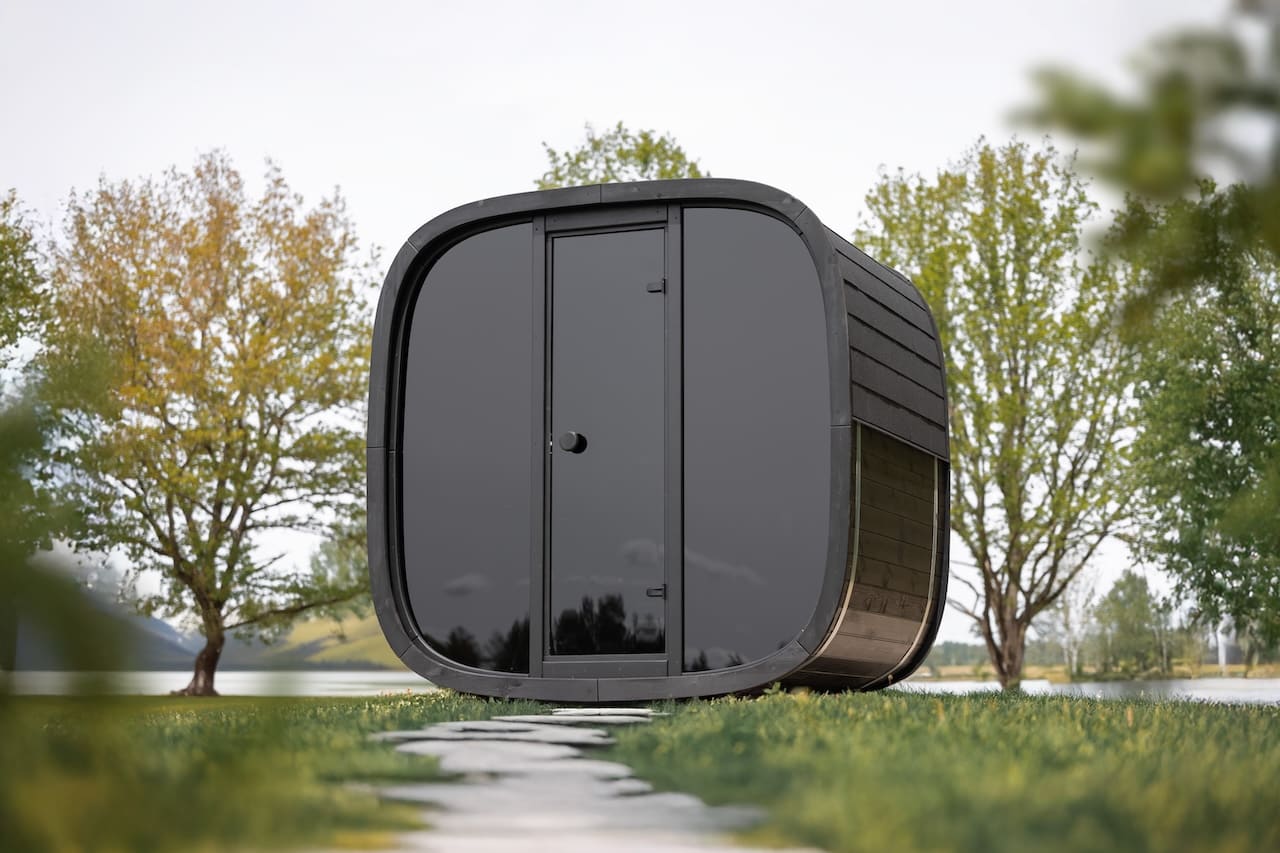Infrared saunas have become increasingly popular in recent years due to their numerous health benefits, including detoxification, relaxation, and pain relief. However, when it comes to choosing an infrared sauna, one of the most important decisions is what type of heater to use. The two most common types of infrared sauna heaters are carbon and ceramic. So, which is better - carbon or ceramic infrared sauna?
Carbon and ceramic infrared saunas both work by emitting infrared light that heats up the body or surrounding air, which causes sweating and helps to detoxify the body. However, the key difference between the two is the type and number of heaters each sauna has. Ceramic heaters are made from ceramic tubes that emit infrared light, while carbon heaters are made from carbon fibres that are woven into a panel and emit infrared light over a larger surface area.
When it comes to choosing between carbon and ceramic infrared saunas, there are several factors to consider, including warm-up time, energy efficiency, and overall sauna experience. Both types of heaters have their own pros and cons, and the best choice will depend on individual preferences and needs. In the following sections, we will take a closer look at the differences between carbon and ceramic infrared sauna heaters and help you decide which is the best option for you.
Key Takeaways
- Carbon and ceramic infrared saunas are the two most common types of infrared sauna heaters.
- Ceramic heaters are made from ceramic tubes, while carbon heaters are made from carbon fibers woven into a panel.
- The best choice between carbon and ceramic infrared saunas will depend on individual preferences and needs, including warm-up time, energy efficiency, and overall sauna experience.
Types of Infrared Sauna Heaters
Infrared saunas are designed to heat the body directly, as opposed to traditional saunas, which heat the air. This is achieved through the use of infrared heaters, which emit infrared light that is absorbed by the body. There are three main types of infrared sauna heaters: ceramic, carbon, and ceramic-carbon combination.
Ceramic Infrared Heater
What is a Ceramic Infrared Heater?
Ceramic infrared heaters use ceramic rods to produce infrared light. The rods are heated by an electric current, which causes them to emit infrared radiation. The radiation is then absorbed by the body, which causes it to heat up.
How do They Work?
Ceramic infrared heaters work by emitting far-infrared radiation. This radiation is absorbed by the body, which causes it to heat up. Ceramic infrared heaters are designed to emit a specific wavelength of radiation, which is believed to be the most effective for producing a sauna-like experience.
Pros of Ceramic Heaters
Ceramic infrared heaters are generally considered to be safe and effective. They provide a lower surface temperature than other types of infrared heaters, which can be more comfortable for users. Ceramic heaters are also relatively inexpensive and easy to replace.
Cons of Ceramic Heaters
Ceramic infrared heaters can sometimes create hot spots, which can be uncomfortable for users. They also tend to have a shorter lifespan than other types of infrared heaters, which can be a disadvantage for users who want a long-lasting sauna experience.
What is a Carbon Fiber Infrared Heater?
Carbon infrared heaters use carbon fiber panels to produce infrared radiation. The panels are heated by an electric current, which causes them to emit infrared radiation. The radiation is then absorbed by the body, which causes it to heat up.
How do They Work?
Carbon infrared heaters work by emitting far-infrared radiation. This radiation is absorbed by the body, which causes it to heat up. Carbon infrared heaters are designed to emit a specific wavelength of radiation, which is believed to be the most effective for producing a sauna-like experience.
Pros of Carbon Heaters
Carbon infrared heaters are generally considered to be safe and effective. They provide a lower surface temperature than other types of infrared heaters, which can be more comfortable for users. Carbon heaters are also known for their energy efficiency, which can save users money on their energy bills.
Cons of Carbon Heaters
Carbon infrared heaters can sometimes create hot spots, which can be uncomfortable for users. They also tend to be more expensive than other types of infrared heaters, which can be a disadvantage for users who are on a budget.
Ceramic-Carbon Combination Infrared Heater
What is a Ceramic-Carbon Combination Infrared Heater?
Ceramic-carbon combination infrared heaters use both ceramic rods and carbon fiber panels to produce infrared radiation. The combination of the two types of heaters is designed to provide a more even and effective sauna experience.
How do They Work?
Ceramic-carbon combination infrared heaters work by emitting far-infrared radiation. This radiation is absorbed by the body, which causes it to heat up. The combination of ceramic and carbon heaters is designed to provide a more even and effective sauna experience than either type of heater on its own.
Pros of Combination Heaters
Ceramic-carbon combination infrared heaters are generally considered to be safe and effective. They provide a lower surface temperature than other types of infrared heaters, which can be more comfortable for users. Combination heaters are also designed to provide a more even and effective sauna experience than either type of heater on its own.
Cons of Combination Heaters
Ceramic-carbon combination infrared heaters can sometimes create hot spots, which can be uncomfortable for users. They also tend to be more expensive than other types of infrared heaters, which can be a disadvantage for users who are on a budget.
Comparison - Ceramic vs Carbon Heaters
When it comes to infrared saunas, the debate between carbon and ceramic heaters is a common one. Both have their advantages and disadvantages, and it ultimately comes down to personal preference. In this section, we will compare carbon and ceramic heaters based on their health benefits, energy efficiency, reliability and durability, and other factors.
Healthier Heating Technique
One of the key differences between carbon and ceramic infrared saunas is the type of heat they produce. Carbon heaters emit far-infrared heat, which is known for its deep penetration into the body. This type of heat is said to be beneficial for detoxification, pain relief, and improved circulation.
Ceramic heaters, on the other hand, emit mid-infrared heat, which is said to be more effective for skin health and wound healing. They also produce some near-infrared wavelengths, which are beneficial for cell regeneration and immune system support.
Energy Efficiency
Carbon heaters are generally considered to be more energy efficient than ceramic heaters. This is because they require lower surface temperatures to achieve the same results. As a result, carbon heaters can provide a more efficient sauna experience, which can save on energy costs in the long run.
Reliability & Durability
When it comes to reliability and durability, both carbon and ceramic heaters have their strengths. Carbon heaters are generally considered to be more reliable, as they tend to have a longer lifespan and a more consistent output over time. They also tend to come with longer warranties than ceramic heaters.
Ceramic heaters, on the other hand, are known for their durability and resistance to damage. They can withstand high temperatures and are less likely to crack or break over time. However, they may require more maintenance than carbon heaters to ensure their longevity.
Ceramic Infrared Heater Pros
While carbon heaters are generally considered to be more efficient and reliable, ceramic heaters have their own unique advantages. For example, they produce more near-infrared wavelengths, which are beneficial for cell regeneration and immune system support. They also tend to heat up faster than carbon heaters, which can be beneficial for those who want a quick sauna session.
Using Carbon and High-End Ceramic Together
Some infrared saunas use a combination of carbon and high-end ceramic heaters to provide the benefits of both types of heat. This can provide a more well-rounded sauna experience that targets both deep penetration and skin health. However, this type of sauna can be more expensive than a single-type sauna.
In conclusion, both carbon and ceramic infrared saunas have their advantages and disadvantages. It ultimately comes down to personal preference and what type of heat you are looking for in your sauna experience.
Conclusion
When it comes to choosing between carbon and ceramic infrared saunas, there is no clear winner. Both types of saunas have their advantages and disadvantages, and it ultimately comes down to personal preference and priorities.
Investment-wise, ceramic saunas tend to be more affordable upfront, but carbon saunas may be more technologically superior and energy-efficient in the long run.
In terms of potential health benefits, both types of saunas can help with relaxation, detoxification, and pain relief, but some people may prefer the higher temperatures and more intense heat experience of ceramic saunas.
When it comes to pros and cons, carbon saunas tend to have a lower blackbody rating, which means they emit less electromagnetic radiation, while ceramic saunas may have a faster heat-up time and more durable heating elements.
It's important to note that both types of saunas come with potential health risks, such as dehydration, overheating, and burns, so it's important to use them safely and according to manufacturer instructions.
For those looking to install a home sauna, both carbon and ceramic saunas are viable options, but it's important to consider the space, ventilation, and electrical requirements of each type before making a decision.
Overall, the choice between carbon and ceramic infrared saunas depends on individual preferences, priorities, and circumstances. While carbon saunas may have some advantages in terms of technology and energy efficiency, ceramic saunas may offer a more intense heat experience and faster heat-up time. Both types of saunas have their disadvantages and potential health risks, so it's important to do thorough research and consult with a healthcare professional before making a purchase.
Q: Which is better, carbon or ceramic infrared sauna?
A: The choice between carbon and ceramic infrared saunas depends on personal preferences and priorities. Both types of heaters have their own advantages and limitations.
Q: What are the advantages of a carbon infrared sauna?
A: Carbon infrared heaters provide a gentle and even heat distribution throughout the sauna. They emit far infrared rays which penetrate the body more effectively, resulting in a deeper sweat and potential health benefits.
Q: What are the advantages of a ceramic infrared sauna?
A: Ceramic infrared heaters have a faster warm-up time and are often more cost-effective compared to carbon heaters. They generate heat by heating a ceramic tube, which can provide a concentrated and intense heat experience.
Q: How do carbon infrared heaters work?
A: Carbon infrared heaters use carbon fiber panels as the heating element. When the heater is turned on, the carbon fibers generate infrared heat, which warms the surrounding air and objects within the sauna.
Q: How do ceramic infrared heaters work?
A: Ceramic infrared heaters work by heating a ceramic tube, which then emits infrared waves. These waves penetrate the body, generating heat and promoting sweating.
Q: What is the difference between ceramic and carbon heaters?
A: The main difference between ceramic and carbon heaters is the way they produce heat. Ceramic heaters heat a ceramic tube, while carbon heaters use carbon fiber panels. This difference in heating elements can affect the heat distribution and intensity within the sauna.
Q: Can I use carbon and ceramic infrared heaters together in one sauna?
A: It is possible to combine carbon and ceramic infrared heaters in the same sauna. This can provide a combination of gentle and intense heat experiences, catering to different preferences.
Q: Are carbon or ceramic infrared saunas better for detoxification?
A: Both carbon and ceramic infrared saunas can help with detoxification. However, carbon saunas are often preferred for their ability to generate a deeper sweat due to the far infrared rays they emit.
Q: Which type of infrared sauna is more energy-efficient?
A: Carbon infrared saunas are generally considered more energy-efficient compared to ceramic saunas. The carbon fiber panels heat up quickly and efficiently, requiring less electricity to maintain the desired temperature.
Q: Can ceramic or carbon infrared sauna be used as a replacement for a traditional sauna?
A: Yes, both ceramic and carbon infrared saunas can be used as an alternative to traditional saunas. They provide similar health benefits, including relaxation, detoxification, and improved circulation.















Leave a comment